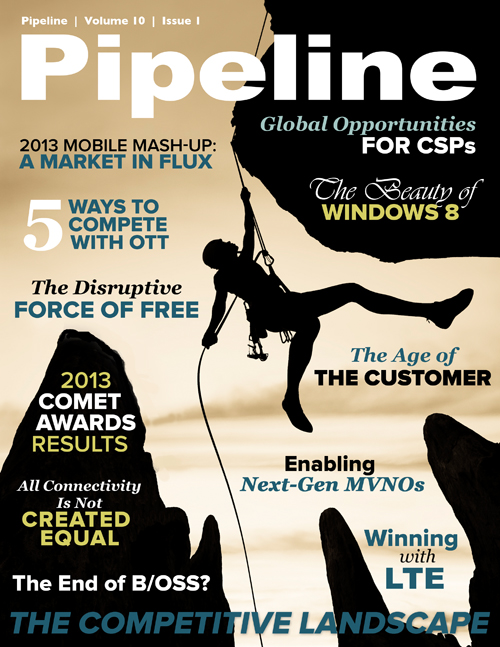5 Ways to Compete With OTT
2. Leverage open APIs.
Operators shouldn’t shy away from open APIs, or application programming interfaces, that can be used to deliver an enhanced vision for unified communications such as service integration with Salesforce.com or other business-process applications. Open APIs have already been successfully used by Facebook, Google, Twitter, and countless other OTT providers to unlock new use cases, but mobile network operators have an even greater opportunity to harness them to generate new revenues, increase their volume of users and spur innovation at a scale that otherwise couldn’t occur in an organic fashion.
How should MNOs pursue an open API strategy? Right off the bat, it’s critical to recognize the importance of “killer apps,” which can be a powerful revenue source, drawing enterprise users and consumers to an offering in large part to access one specific “must-have” application. Operators should also tap available resources to figure out how to securely open up their networks’ information and capabilities to third-party application developers, who would then be free to offer fresh perspectives through apps that solve communications challenges and enhance collaboration, thus expanding the innovation ecosystem.
GSMA OneAPI is one such initiative. It aims to reduce the time and effort required to create applications and content that are portable across various MNO systems. At the same time, MNOs and other service providers have experience with bundling strategies, which can be useful when integrating third-party applications into current or future offerings. Among the top 50 apps, both free and paid, 77 percent link to back-end services, while only 23 percent are fully stand-alone apps (Willmott, Steven, “Why the App Economy Isn’t the App Economy, but the API Economy,” PandoDaily.com, 7 Aug. 2012). The data point to an opportunity for service providers that develop a broad platform strategy linking third-party applications enabled by open APIs to existing communications services and business-process applications.
Bundling can also have a significant impact on the reduction of churn. Today enterprise users or consumers can take an application with them as they move from one service provider to the next, but by furnishing a platform for third-party applications that are specific to its network, particularly “killer apps,” a provider can encourage brand loyalty, making customers less likely to churn to a competitor.
3. Deliver a single user experience.
The proliferation of mobile devices, platforms and networks presents an inordinate challenge for organizations that want to give end users the means of having a single application from which to access voice, video, instant messaging, and presence along with additional key unified communications services that can enhance, not obfuscate, business communications and collaboration. The same can be said of providers that seek to deliver their services to enterprise customers.
Because they own their networks, mobile network operators have an advantage over OTT players, who must cobble together their applications and integrate them with an end user’s existing products and networks. In this sense MNOs are positioned to deliver a single user experience in a way that the over-the-top crowd can’t.
Multiple trends are driving the need to deliver a single user experience, ranging from an increasingly mobile workforce to rising user expectations for a “consumerized” experience and the fact that enterprises must manage and address BYOD (“bring your own device”) corporate policies and employer-issued mobile devices. As these trends intensify, the lack of a single user experience becomes more glaring.
Imagine an enterprise end user placing a voice call on his or her Android smartphone, then wanting to seamlessly move the conversation to an iPad video chat or a group message in the middle of the call. Today that’s difficult, the result of technology limitations that have in effect created communications silos for voice, video, text, and collaboration that inhibit workforce productivity and mobility.



















